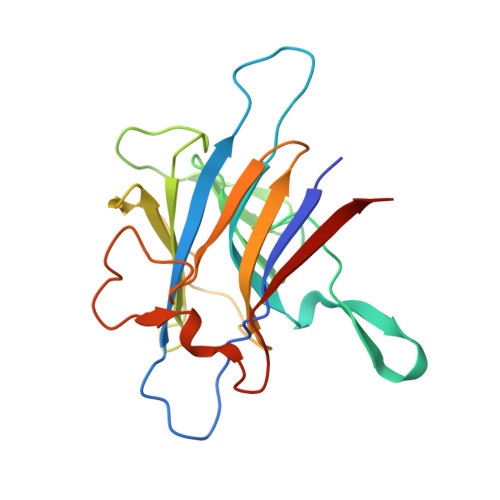A SPRY1 domain cardiac ryanodine receptor variant associated with short-coupled torsade de pointes.
Touat-Hamici, Z., Blancard, M., Ma, R., Lin, L., Iddir, Y., Denjoy, I., Leenhardt, A., Yuchi, Z., Guicheney, P.(2021) Sci Rep 11: 5243-5243
- PubMed: 33664309
- DOI: https://doi.org/10.1038/s41598-021-84373-9
- Primary Citation of Related Structures:
6J6L - PubMed Abstract:
Idiopathic ventricular fibrillation (IVF) causes sudden death in young adult patients without structural or ischemic heart disease. Most IVF cases are sporadic and some patients present with short-coupled torsade de pointes, the genetics of which are poorly understood. A man who had a first syncope at the age of 35 presented with frequent short-coupled premature ventricular beats with bursts of polymorphic ventricular tachycardia and then died suddenly. By exome sequencing, we identified three rare variants: p.I784F in the SPRY1 of the ryanodine receptor 2 (RyR2), p.A96S in connexin 40 (Cx40), reported to affect electrical coupling and cardiac conduction, and a nonsense p.R244X in the cardiac-specific troponin I-interacting kinase (TNNI3K). We assessed intracellular Ca 2+ handling in WT and mutant human RYR2 transfected HEK293 cells by fluorescent microscopy and an enhanced store overload-induced Ca 2+ release in response to cytosolic Ca 2+ was observed in RyR2-I784F cells. In addition, crystal structures and thermal melting temperatures revealed a conformational change in the I784F-SPRY1 domain compared to the WT-domain. The novel RyR2-I784F variant in SPRY1 domain causes a leaky channel under non-stress conditions. The presence of several variants affecting Ca 2+ handling and cardiac conduction suggests a possible oligogenic origin for the ectopies originating from Purkinje fibres.
Organizational Affiliation:
INSERM, UMRS 1166, Faculté de Médecine Sorbonne-Université, Unité de Recherche sur les Maladies Cardiovasculaires et Métaboliques, 91, boulevard de l'Hôpital, 75013, Paris, France.















